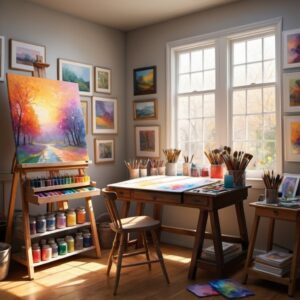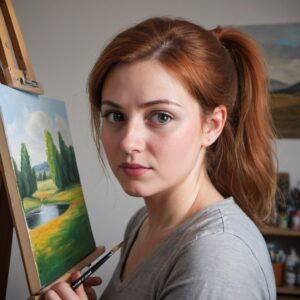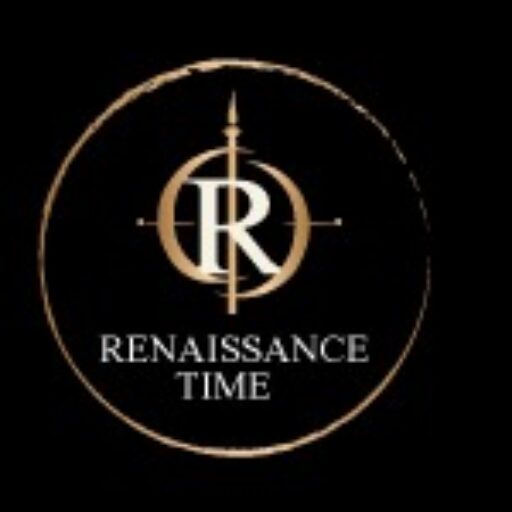
I Wish to Learn Painting? Quick Guide to Begin

Overview
Have you ever been so taken aback by a stunning painting that you felt, “I wish I could do that”? Yes, you certainly can! The process of learning to paint is one that is full of expression, creativity, and limitless opportunities. Painting is an exceptional means of expressing your ideas to the world, whether your goal is to paint abstract masterpieces or to capture the beauty of a landscape. So, where should you begin? Now let’s get began!
Knowing the Fundamentals
Let’s start with the definition of painting. Painting is fundamentally the act of transferring pigment to a surface with the use of brushes, knives, or even your fingers. It’s an ancient form of artistic expression from the prehistoric era. It’s important to grasp the different textures and effects that different painting materials give.
Selecting Your Media
Selecting your medium is one of the first choices you’ll have to make as an aspiring painter. Here are a few well-liked choices:
Acrylics: are flexible and fast-drying, making them ideal for novices.
Watercolors: are excellent for delicate work because of their fluidity and transparency.
Oils: Vibrant and rich, but they dry slowly, giving you more time to paint on the finer details.
Gouache: More opaque than watercolors, but yet able to produce vibrant colors.
Getting Supplies Together
It’s time to gather your supplies after deciding on your medium. You don’t have to buy the priciest supplies as a novice. These are a few necessities:
Paints and Brushes: Begin with a selection of different size brushes and a basic set of paints.
Canvas and Paper: Select appropriate surfaces based on your medium.
Palette and easel: An easel to support your work and a palette for blending colors.
Organizing Your Work Area
Painting in a specific area might yield significant benefits. Locate a brightly lighted space where you can comfortably spread out your supplies and work. Organize and place your resources conveniently to ensure a productive workflow.
Acquiring Fundamental Skills
You’ll need to master a few fundamental skills before you can begin to create masterpieces. To observe how colors interact, try layering, experimenting with color mixing, and practicing various brush strokes. Your artistic journey will be constructed using these fundamental talents.
Investigating Various Styles
Painting has so many distinct techniques, and experimenting with them might help you identify your specialty. Here are some to think about:
Realism: Is concerned with portraying the world as truthfully as possible.
Impressionism: Places more emphasis on color and light than on accurate portrayal.
Abstract: Constructs compositions without the aid of visual references by utilizing forms, colors, and shapes.
Surrealism: Constructs imaginative situations by fusing elements of the dream world with the real world.
Examining Art Theory
Gaining an understanding of art theory will greatly improve your work. Explore subjects like composition, which teaches you how to arrange pieces nicely, and color theory, which investigates the interactions between colors. Another essential idea that can help you give your paintings depth and substance is perspective. Maintaining a Regular Practice
Painting requires practice just like any other skill. Make time to paint every day or every week, even if it’s only for a little while. Keeping a sketchbook handy is very beneficial for practicing methods and sketching down ideas.
Attending Workshops and Courses
Gaining knowledge from others might hasten your development. To get fresh perspectives and criticism, think about enrolling in online courses or going to workshops in your area. Beginner classes are frequently offered by community centers and art schools, and they can offer both a sense of community and helpful teaching.
Getting Motivated
You’re surrounded by inspiration! Go on walks in the outdoors, check out galleries of art, or just take in your surroundings. Other artists might provide fresh viewpoints and techniques to attempt, which can be a fantastic source of inspiration as well. if you interested in the history of classical and renaissance art i suggest you to read my this article by click on this image
Making Your First Work
When the time comes to begin your first painting, make a plan first. Select a color scheme and make sketches of your ideas. Don’t be scared to try new things and make errors because every failure is an opportunity to learn. Above all, relish the process and allow your imagination to run wild.
There is one interesting and effective way to start creating arts in any technique – to take part in a challenge. For example, “365 days” is perfect. The goal is to create artworks daily during one year. It is very difficult! Sometimes there is no time/mood/energy. But despite all the difficulties, it is important not to miss a single day. You can just make a small works in 10 minutes, but do not skip a day! Use everything as a preference: people and things around you, other works, photos. The most important thing is to paint what you really like!
Try different techniques, materials, surfaces during this challenge. So, in a year you will really improve your skill, understand your preferences in supplies and tools, and, of course, take a huge step in developing your style.
Important:
- use quality materials!
- allow yourself to make bad works; don’t worry if it seems to you that some pictures turned out to be not very good
- always draw pencil sketches before!!
- share on social media how your challenge is going
FAQ
1. As a beginner, how often should I practice painting?
Try to practice on a daily basis, even if it’s only for a little while. The secret to improvement is consistency.
2. Do I need to start painting using expensive supplies?
No, you can begin with inexpensive, basic supplies. You can invest in better materials as you advance.
3. Can I learn painting on my own?
Yes, many artists are self-taught. Nonetheless, enrolling in classes and requesting feedback might significantly improve your educational experience.
4. What happens if I paint anything incorrectly?
Making mistakes is a necessary part of learning. Accept them as chances to grow and learn.
5. How do I find my personal style?
Explore numerous styles and techniques, and with time, you’ll organically develop your own distinctive approach to painting.
I am artist working on fiverr. if you need any portrait painting i will help you
